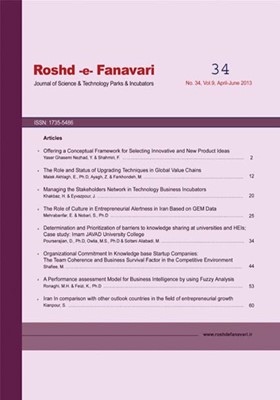The Role and Status of Upgrading Techniques in Global Value Chains
Subject Areas : Technology ManagementZahra Ayagh 1 , Mahsa Farkhondeh 2 , Esmaeil Malek Akhlagh 3
1 -
2 -
3 -
Keywords: Upgrading, Upgrading Techniques, Global Value Chain, Chain of Market-based Relationship, Chain of Network –based Relationship, Quasi-Hierarchical and Hierarchical Value Chain,
Abstract :
In the current era, with joining developing country to the global markets, companies in these countries are facing with competition pressure. Studies show that the best way for producing qualified products is moving toward skillful and smart activities. Since modern international commerce has provided the possibility of purchasing wide range of products, production and consumption are both taking place within far geographical distances. Therefore, in order to permanently exist in dynamic world markets, companies and industries do not have other chances except implementing upgraded techniques along the production process. Value chain analysis has important role in perception of effective implementation of such technique to successfully protect companies in global economy, because in global value chain framework, company can enhance added value and gain competitive advantages by using appropriate techniques through operations and production process improvement. The purpose of this study is the explanation of the role and status of upgrading techniques in global value chain. So at first the definition of upgrading concepts and existence technique is presented, then the role of upgrading technique in global value chain management is investigated through expressing global value chain basics and its models. Studies indicate that, product and process upgrading in hierarchical and quasi-hierarchical global value chain, and functional upgrading technique in market-driven global value chain model, act more efficiently; whereas in the chain of network–based relationship, producers and consumers use their competency and competitiveness complementarily for upgrading and innovation.


